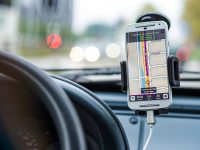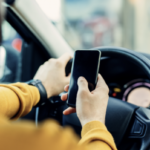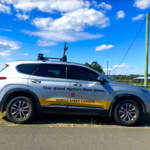Driving and Mobile Phones. Knowing the Rules.

The Kiwis have been all over Facebook recently, with a television advertising campaign called ‘Hello’ encouraging New Zealanders to go ‘phone free’ while driving.
The ad uses understated humour to get the message across, and many of us have had a bit of a giggle. It is a good reminder, though, of the dangers of using mobile phones while driving.
In Australia, it is against the law to handle a mobile phone while you’re driving, and it has been for several years. Laws differ across Australia, but the general rule is that you can only use your phone while driving if it is secured in a legally mounted cradle which is not obscuring your view of the road. In other words, if it is completely ‘hands-free’.
The rules in NSW are essentially that you are not permitted to:
- Hold a phone between your shoulder and your ear, even while keeping your hands on the steering wheel,
- Have a phone in your lap or your leg, and talk with the speaker function on, or
- Touch a phone while you are stopped at an intersection or traffic lights.
Regardless of whether you are using the phone to talk, stream music through your audio system, get map directions, receive speed information or live traffic updates, you cannot touch the phone under any circumstances (unless it is mounted), other than to hand it over to a passenger.
All other functions such as texting, Facebook, Twitter, email, chat etc, are strictly prohibited for all drivers.
Learner Drivers (L-Plates) and Provisional Drivers (P-Plates) are banned from using phones at all while driving.
Fines and penalties differ state by state, and in New South Wales, new fines were introduced at the beginning of this year. Operating a phone while driving will now cost you $319 plus four demerit points, or double demerit points during major holiday periods.
Statistics tell us that more and more Australians have mobile phones – estimates are at around 97% of the population.
What’s more, research suggests that even though fines and demerit points have been in force for some time, drivers remain ambivalent and many disregard the law.
A recent Community Attitudes to Road Safety survey showed that 32% of drivers admit to reading a text message while driving, and 18% admit to sending a text message.
Mobile phone use while driving is said to be a significant cause of trauma on our roads. Accidents involving drivers using mobile phones are reported to be more likely to lead to hospitalisation, than when a phone is not being used.
The mobile phone laws are designed to ensure drivers don’t take their eyes off the road. Studies have found that if you are driving at 60kmph and take your eyes off the road for two seconds, you will drive for an average of 33 metres blind. A lot can happen in 33 metres, especially in wet and slippery conditions, around tight corners, at night time, with sun strike, in heavy traffic, when you’re tired and especially when travelling at higher speeds.
The message is clear – if you’re caught, you’ll be fined and lose points.
But the reality is that if you’re using a mobile phone while driving and you have an accident, then the consequences can be much worse than even this.
The NSW Centre for Road Safety has published a list of ways to reduce the temptation to use your phone when driving.
Aside from points and fines, perhaps it’s not worth putting the lives of others and yourself at risk.
If you believe you have been unfairly fined for driving with a mobile phone and wish to contest it, or to lodge a licence appeal for loss of demerit points, and experienced traffic defence lawyer may be able to help.
Going to court for a traffic offence?
If you are going to court for a traffic offence, call or email Sydney Criminal Lawyers anytime to arrange a free first consultation with an experienced, specialist traffic lawyer who will accurately advise you of your options, the best way forward, and fight for the optimal outcome in your specific situation.






